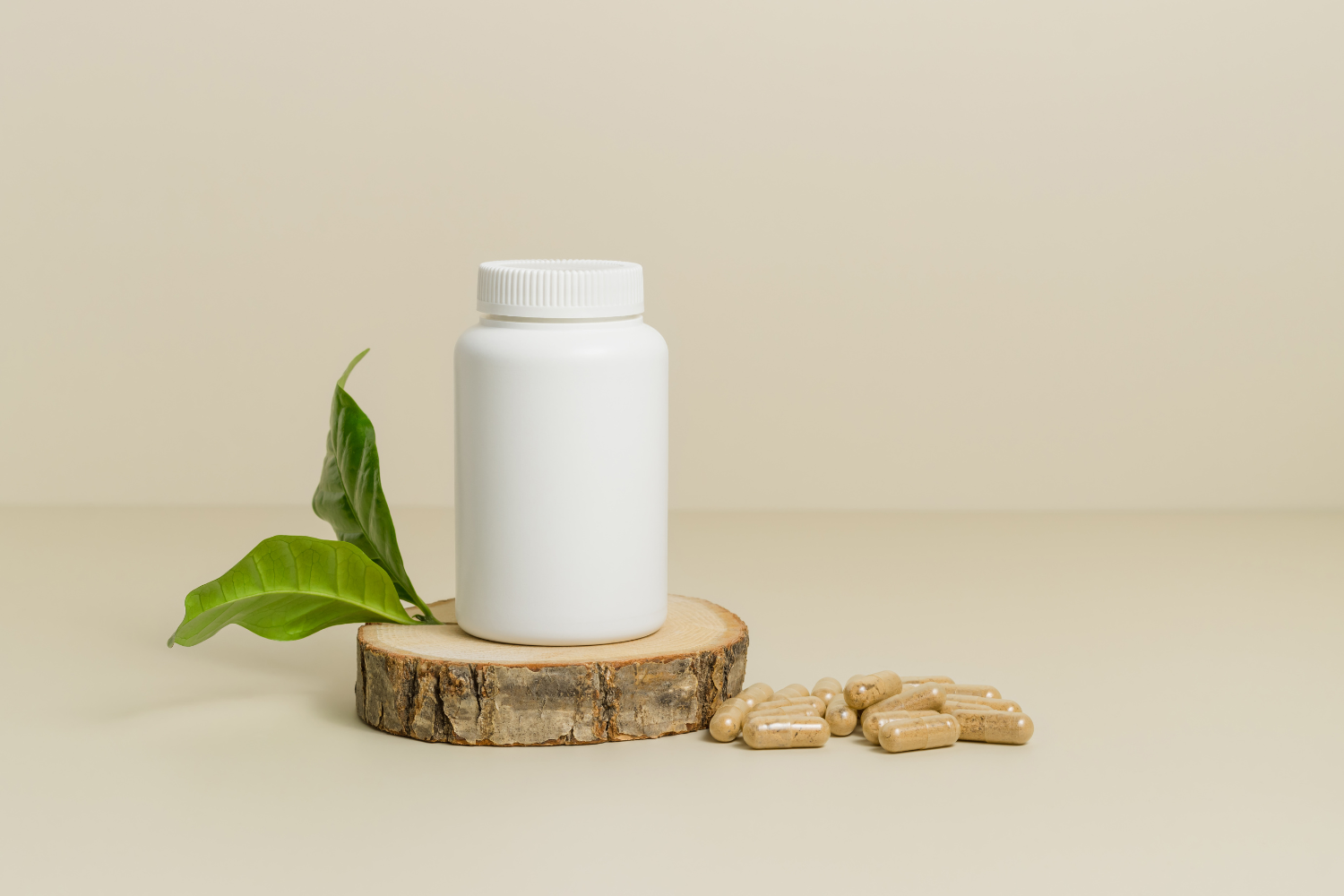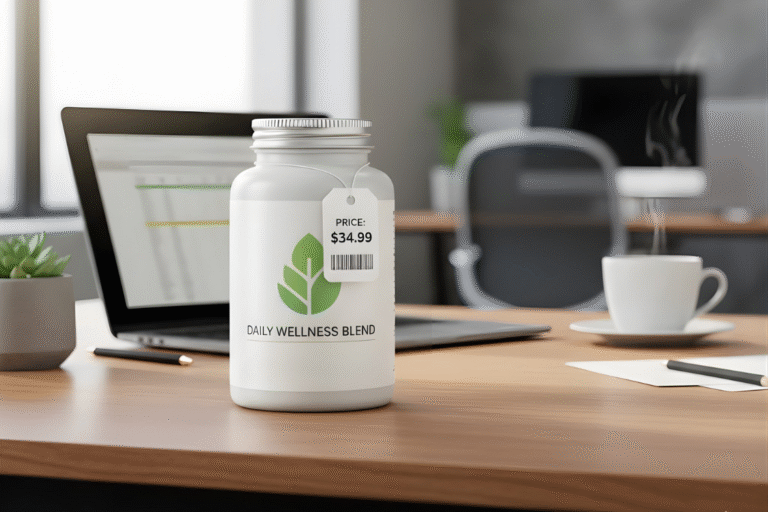Sustainable packaging has become a key focus for nutrition brands looking to reduce their environmental impact and meet growing consumer demand for eco-friendly materials. As the market for dietary supplements, vitamins, and functional foods expands, so does the need for eco-packaging solutions that minimize plastic waste and support a circular economy.
Understanding the difference between biodegradable supplement packaging and compostable packaging is essential for companies evaluating environmentally friendly options.
This guide explores how biodegradable and compostable materials differ, the benefits of flexible packaging formats like pouches and bags, and how businesses can implement custom packaging strategies using recycled and renewable resources to lower their carbon footprint and align with sustainability goals.
The Difference Between Biodegradable and Compostable Packaging
Nutrition brands exploring sustainable packaging often come across terms like biodegradable and compostable. While they sound similar, they mean different things and impact the environment differently.
What is Biodegradable Packaging?
Biodegradable packaging is made from materials that break down naturally over time through the action of microorganisms. Depending on the environment, these materials can take months or even years to decompose. While biodegradable materials reduce the reliance on conventional plastics, they may still leave small residues that affect soil and water quality.
Common biodegradable packaging materials include:
- Bioplastics – plastics made from renewable raw materials like corn or sugarcane
- Recycled paper – reused fibers that reduce the demand for virgin materials
- Cornstarch blends – natural starch-based options that biodegrade under the right conditions
What is Compostable Packaging?
Compostable packaging is designed to break down into organic matter without leaving toxic residue behind. These materials are designed to decompose into organic matter when processed in specific composting environments, such as industrial composting facilities or home composting systems. Compostable materials can turn into nutrient-rich compost when processed under proper industrial or home composting conditions that meet required environmental parameters, contributing to a circular economy.
Common compostable packaging materials include:
- PLA (polylactic acid) – a plant-based plastic alternative often used in bottles, pouches, and bags
- Kraft paper – unbleached, recyclable paper that decomposes quickly
- Bagasse – a fiber byproduct from processed sugarcane used in trays and containers
- Mushroom packaging – made from agricultural waste and mycelium, fully biodegradable and plastic-free
Key Differences & Which is Better for Your Brand
The main difference between biodegradable and compostable packaging is how completely and quickly they break down. Biodegradable packaging is a broader term and may not fully decompose without the right conditions. Compostable packaging, on the other hand, is more reliable for full breakdown but requires proper disposal infrastructure. Brands should choose based on their sustainability goals, consumer expectations, and available waste management systems.
| Feature | Biodegradable Packaging | Compostable Packaging |
|---|---|---|
| Breakdown Time | Months to years | Weeks to a few months |
| Residue | May leave small amounts | Leaves no toxic residue |
| Required Conditions | Natural environments | Specific composting conditions (home/industrial) |
| Regulation | Less standardized | Stricter certifications and standards |
| Common Use | Flexible packaging, bottles, bags | Pouches, tea bags, coffee and candy wrappers |
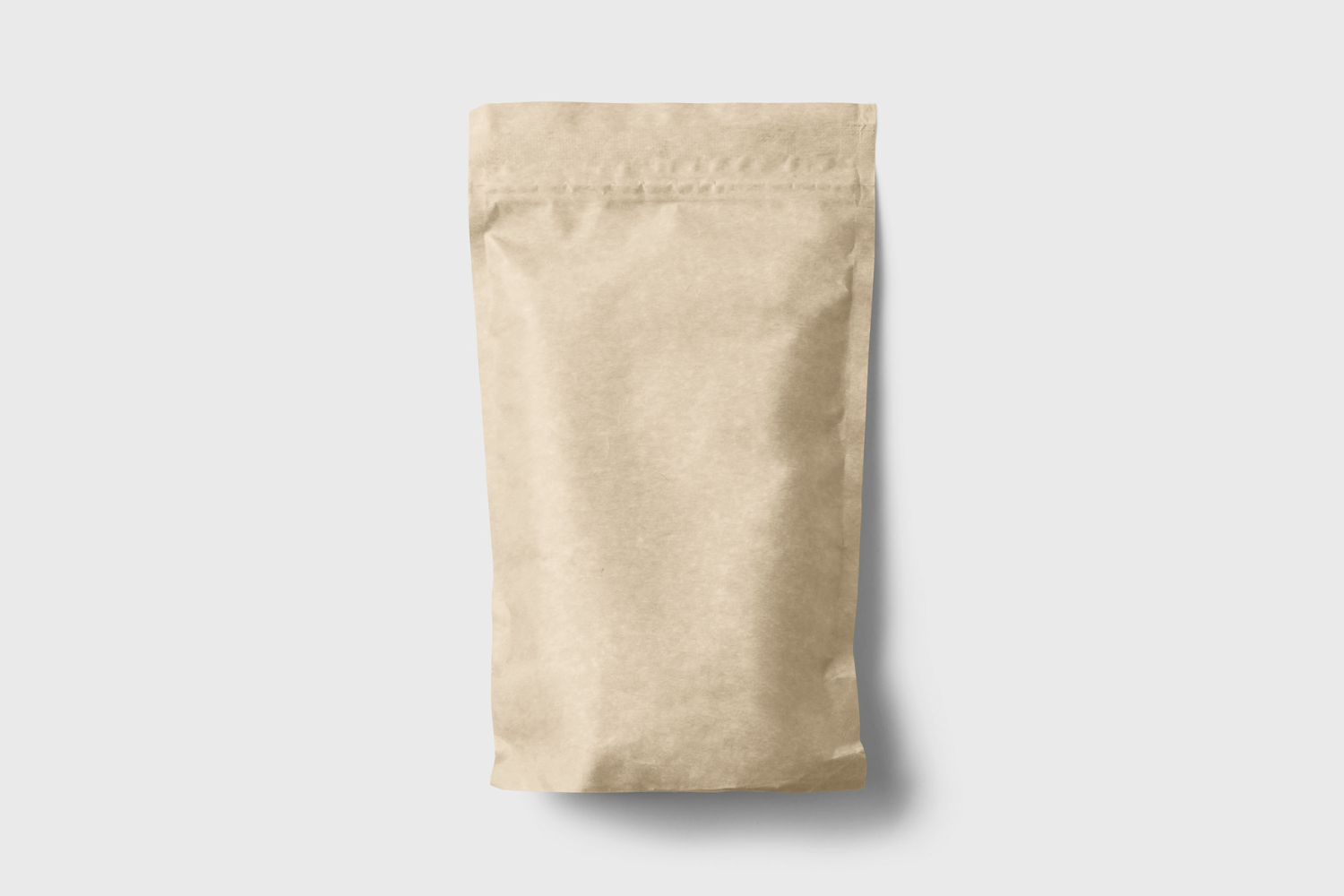
Benefits of Biodegradable & Compostable Packaging for Nutrition Brands
Switching to biodegradable or compostable packaging offers more than just environmental perks. Sustainable packaging for companies producing supplements, vitamins, and wellness products also provides key business advantages in branding, regulation, and consumer trust.
Environmental Benefits – Reducing Plastic Waste and Carbon Footprint
Traditional plastics in dietary supplements and cosmetics packaging contribute to landfill buildup and pollution. Using eco-friendly packaging solutions like recyclable or compostable materials reduces plastic waste and lowers a company’s carbon footprint. Choosing raw materials like corn-based PLA or recycled paper helps reduce the need for fossil-fuel-based plastics, supporting long-term sustainability efforts.
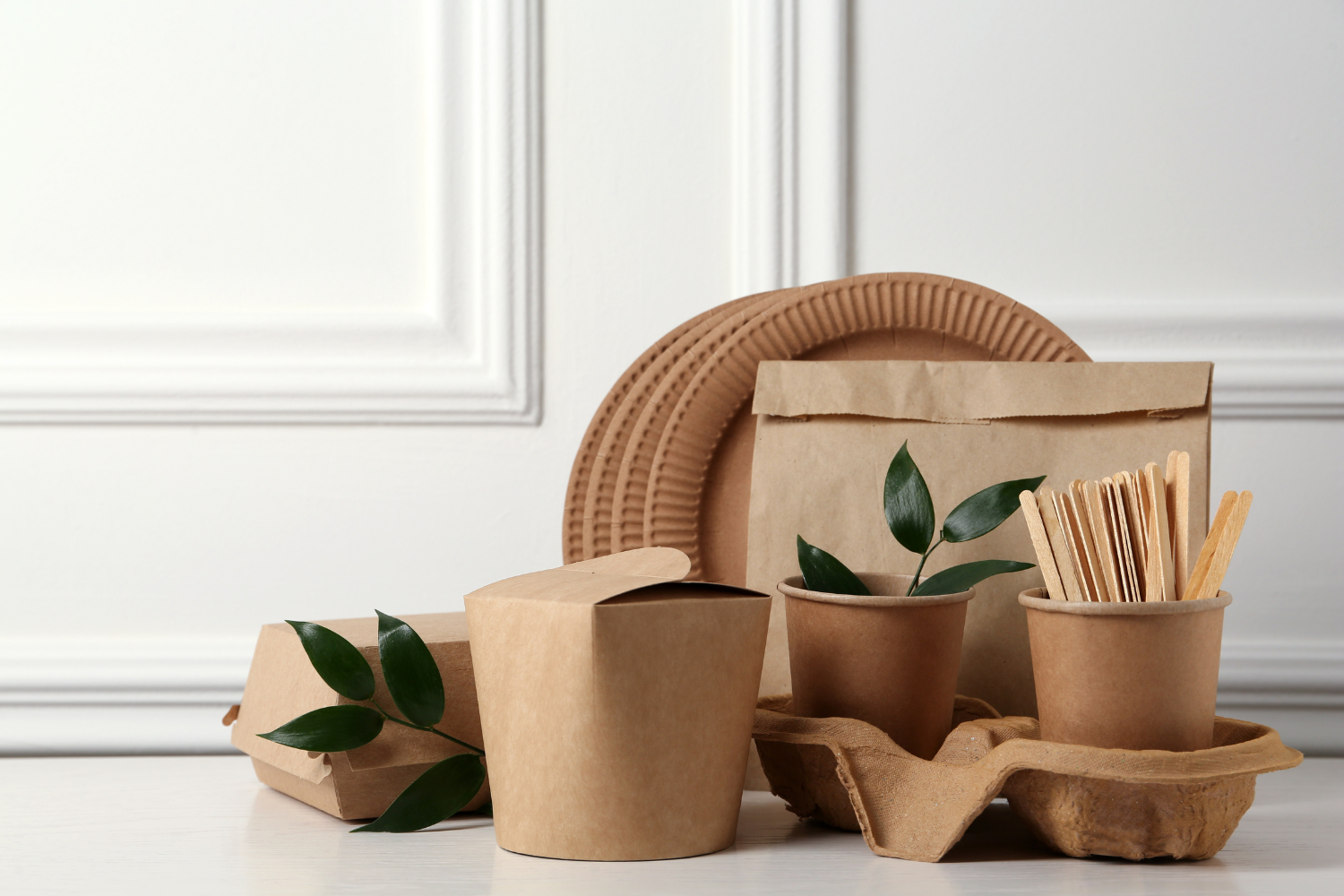
Consumer Appeal – Meeting Growing Demand for Eco-Friendly Products
Customers increasingly expect brands to offer environmentally friendly packaging. Nutrition consumers—especially those buying tea, coffee, and supplements—often look for packaging that aligns with their values. Plastic-free, reusable, or recyclable options build trust with eco-conscious customers and drive loyalty. Clear labels about compostability and sustainability also influence buying decisions.
Compliance with Sustainability Regulations – Staying Ahead of Packaging Laws
As governments adopt stricter rules around plastic use and packaging waste, using biodegradable or compostable materials helps brands stay compliant. Many regions are phasing out single-use plastics and increasing oversight on packaging waste and recycling processes. Staying ahead of these regulations using sustainable packaging can prevent fines and ease market entry into regions with strict packaging standards.
Enhancing Brand Reputation – Differentiating as a Sustainability Leader
Eco-packaging solutions help nutrition brands stand out in a competitive market. Offering a wide selection of packaging options, including compostable pouches or biodegradable bottles, shows a commitment to the environment and customers. Companies that invest in sustainable development practices also position themselves as future-focused, appealing to consumers and potential business partners.

Types of Biodegradable and Compostable Packaging for Nutrition Products
Nutrition brands now have access to a wide selection of eco-friendly packaging options designed to replace conventional plastics. These materials can be used across various supplement and wellness products while supporting sustainability goals.
Compostable Pouches & Bags
Compostable pouches and bags are commonly made from PLA, kraft paper, or cornstarch-based films. When properly composted, these materials break down into organic matter and are ideal for flexible packaging needs. Brands often use these solutions for powdered supplements, protein shakes, snacks, tea, and coffee. Compostable bags reduce plastic waste and maintain product quality by offering barrier protection for powders and dry goods without sacrificing sustainability.

Biodegradable Plastic Bottles
Biodegradable bottles may use plant-based plastics like PHA, which are more likely to degrade in natural environments. PLA-based bottles generally require industrial composting to break down effectively. These materials offer similar durability and shelf performance as PET and HDPE plastics but are designed to degrade more quickly in the right conditions. They work well for liquid vitamins, drinkable supplements, and other health products that require secure, leak-proof packaging. Switching to biodegradable bottles helps reduce reliance on petroleum-based plastics while still meeting packaging standards.
Paper-Based Containers & Tubes
Paper-based packaging can offer a more sustainable alternative when free of plastic or foil linings and made with recyclable or compostable materials. These containers are fully recyclable and biodegradable, making them a strong choice for brands selling capsules, powdered supplements, and superfoods. They also allow custom packaging options like matte finishes and eco-friendly labels, enhancing visual appeal while aligning with consumer sustainability preferences.
Mushroom Packaging & Sugarcane Fiber Containers
Mushroom packaging and sugarcane fiber containers are two compostable alternatives gaining popularity in the wellness space. These packaging types are made from renewable materials and can decompose fully without leaving toxic residue. Their structure makes them suitable for protective inserts or outer packaging for vitamins and cosmetics but not for moisture-sensitive product containers. Strong and durable, these solutions are excellent for companies aiming to eliminate plastic from their packaging line entirely.
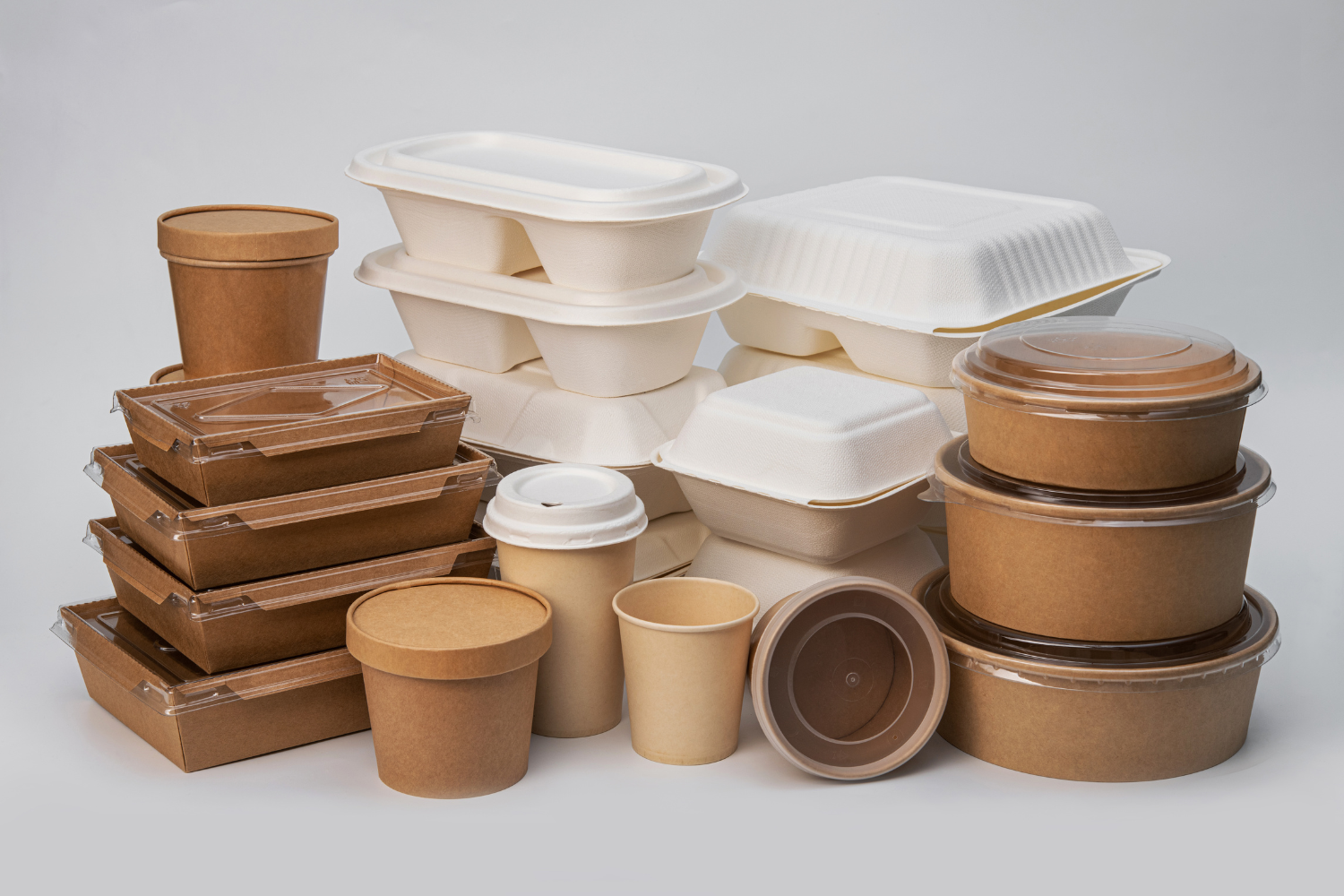
How to Choose the Right Sustainable Packaging for Your Brand
Choosing the best biodegradable or compostable packaging depends on the specific needs of your product, business goals, and what your customers expect. Balancing sustainability with functionality, cost, and compliance requirements is essential.
Product Compatibility – Ensuring Packaging Maintains Freshness and Stability
Supplements and vitamins need packaging that protects against moisture, oxygen, and light. Flexible packaging like compostable pouches works well for powders and snacks, while biodegradable bottles provide structure for liquids. Choosing appropriate packaging materials can support moisture and oxygen control, which helps maintain product integrity during storage, supporting product quality from production to consumer use.
Disposal & End-of-Life Considerations – Will Customers Be Able to Compost or Recycle It Easily?
Packaging should be easy for consumers to dispose of properly. Compostable packaging must go to industrial or home composting systems, while recyclable options like paper or certain plastics must follow local recycling process guidelines. Clear labels help customers understand how to dispose of packaging, reducing contamination in the recycling stream and supporting a circular economy.
Cost & Scalability – Balancing Sustainability with Business Growth
Biodegradable and compostable materials often cost more than conventional plastics. Brands must evaluate production costs and how well these materials scale with business growth. Some companies reduce costs by switching to flexible formats like pouches, which use less raw material and are easier to transport, helping lower overall environmental impact and shipping expenses.
Certifications & Compliance – Look for BPI-Certified Compostable Materials
Sourcing certified materials ensures your packaging meets regulatory and environmental standards. Look for third-party certifications like BPI for compostability or FSC for paper sourcing. Certified packaging supports credibility, helps avoid greenwashing claims, and ensures compliance with sustainability regulations across different markets.
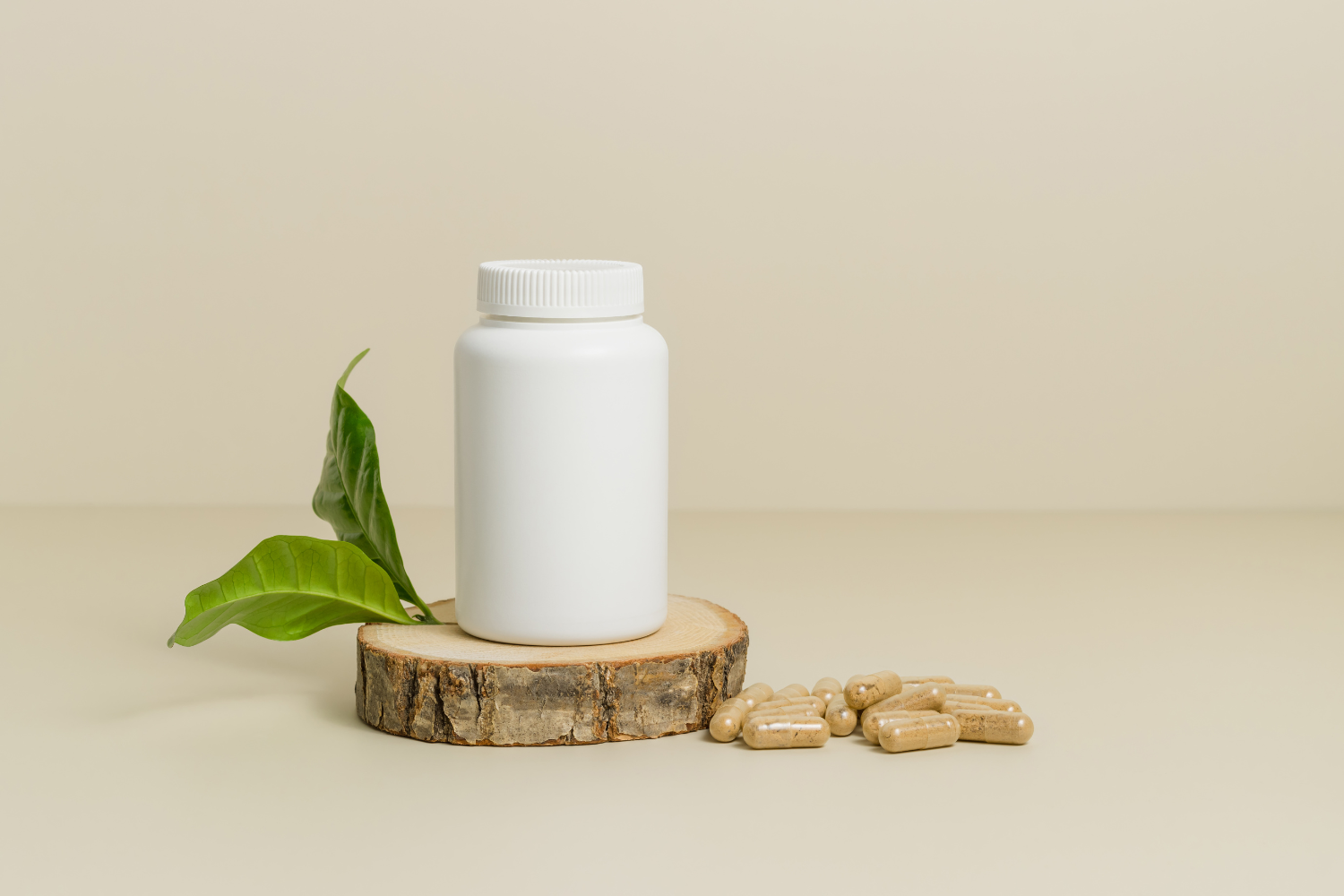
Challenges & Considerations When Switching to Sustainable Packaging
Shifting to biodegradable or compostable packaging is a strategic move for supplement brands, but it comes with certain challenges. Brands must carefully plan the transition to ensure packaging meets performance and sustainability expectations. Factors like cost, infrastructure, and customer education affect decision-making.
- Higher costs than traditional packaging – Sustainable materials like PLA or mushroom packaging often cost more than conventional plastics.
- Limited availability of composting facilities for consumers – Many customers may not have access to industrial composting, limiting proper disposal options.
- Ensuring durability and shelf-life compatibility – Not all eco-friendly materials offer the same protection or shelf life as PET or HDPE plastics.
- Educating customers on proper disposal methods – Clear labels and messaging are needed to help consumers compost or recycle correctly.

Where to Source Biodegradable and Compostable Packaging
Nutrition brands can explore several sourcing options for eco-packaging solutions depending on their business size and product needs. Working with the right suppliers ensures materials meet regulatory standards and align with your company’s sustainability strategy.
- Recommended suppliers for sustainable packaging – Look for vendors specializing in biodegradable supplement packaging or compostable packaging certified by recognized bodies.
- Bulk purchasing vs. small-batch testing – Start with smaller test runs of new packaging to evaluate performance before scaling up to large volumes.
- Partnering with eco-friendly manufacturers – Choose manufacturers that use renewable resources and maintain sustainable production practices to reduce overall environmental impact.

Choosing the Right Packaging for a Sustainable Nutrition Brand
Nutrition businesses focused on long-term growth and environmental responsibility are turning to biodegradable and compostable packaging to meet market expectations and regulatory demands. With various eco-friendly materials and packaging solutions, brands can reduce plastic waste, lower their carbon footprint, and support a circular economy. Making smart choices around materials, suppliers, and disposal strategies can help companies deliver dietary supplements in packaging that’s both functional and environmentally friendly.
Frequently Asked Questions
What is the best biodegradable packaging for dietary supplements?
Due to their biodegradability and durability, PLA-based pouches and paper tubes are commonly used for vitamins and powders.
Is compostable packaging the same as biodegradable?
No, compostable packaging breaks into non-toxic organic matter under specific conditions, while biodegradable packaging may take longer and leave residue.
Can compostable bags be used for protein powders?
Yes, compostable bags made from cornstarch blends or kraft paper are suitable for powders and dry supplement products.
Are eco-friendly packaging options more expensive?
Eco-packaging solutions often cost more than traditional plastics but can offer long-term value through brand appeal and regulatory compliance.
Where can I buy compostable packaging for supplements?
Brands can source from sustainable packaging suppliers offering certified compostable and biodegradable materials for pouches, bottles, and containers.
References
- Biodegradable Products Institute. (2023). Certification. https://bpiworld.org/certification
- O’Loughlin, J., Doherty, D., Herward, B., McGleenan, C., Mahmud, M., Bhagabati, P., Boland, A. N., Freeland, B., Rochfort, K. D., Kelleher, S. M., Fahy, S., & Gaughran, J. (2023). The Potential of Bio-Based Polylactic Acid (PLA) as an Alternative in Reusable Food Containers: A Review. Sustainability, 15(21), 15312. https://doi.org/10.1016/j.heliyon.2024.e39846
- U.S. Department of Agriculture. (n.d.). BioPreferred Program. https://www.biopreferred.gov/BioPreferred/
- U.S. Environmental Protection Agency. (2025). Composting At Home. https://www.epa.gov/recycle/composting-home
- U.S. Environmental Protection Agency. (2025). Understanding Global Warming Potentials. https://www.epa.gov/ghgemissions/understanding-global-warming-potentials
- U.S. Federal Trade Commission. (2012). Environmental Claims: Summary of the Green Guides. https://www.ftc.gov/business-guidance/resources/environmental-claims-summary-green-guides
